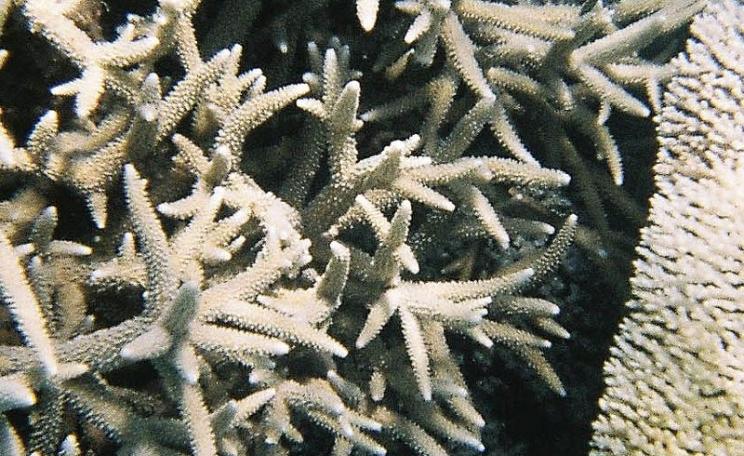Whooping like a cowboy, Bruce zigzagged his 4x4 through the Queensland dusk. On the road behind him – carnage. Scores of squished and warty bodies. Toads, dead and dying, up to 10 inches long, mottled yellow and brown and red, packed with poison.
Bruce didn’t enjoy taking life – not usually – indeed his farmer friends sometimes joshed him about being squeamish. But cane toads were an exception. They brought out an unsuspected violent streak in Bruce. Hard to blame him – two of his dogs had died from licking the toads’ toxic skin, and neighbours told of fatally tainted drinking troughs.
•
Bufo marinus, dubbed cane toad in Australia, is one of the few amphibians and reptiles to become naturalised around the world. It has certainly been the most destructive. A four-legged venom factory, it menaces all sorts of creatures – its predators as well as its prey – and is lethal even when dead.
In 1935, Queensland’s sugar-cane growers saw Bufo marinus as a potential saviour. This insect-gobbling toad, newly introduced from Hawaii, promised to make short work of the beetles ravaging the sugar plantations.
At last, the perfect pest controller!
Wrong.
The toads showed little or no interest in the beetles they were expected to consume. Instead, they feasted on a variety of other insects, mostly ‘benign’. And they had begun to eat (or outcompete) native frogs, lizards, snakes… Virtually no animal was safe from the cane toad: ravenous, resilient, a master poisoner.
Australians were slow to understand this. Many still regarded Bufo marinus as helpful: in human pregnancy tests, for example. Another fallacy. Some strange people kept them as pets.
Who thinks well of the toads now, so rashly invited in, an occupying army, ever advancing, impossible to defeat?
A decades-long cross-country march has taken them as far as Darwin, remote capital of the Northern Territory. Here, outraged residents often have to surrender their swimming pools to the croaking hordes.
It’s unpleasant and inconvenient, though hardly a catastrophe. But in Kakadu National Park, a World Heritage site, the toads could obliterate almost any fauna they encounter.
Ecologists are alarmed, keenly aware of Australia’s historic wildlife losses. Unique animals are gone forever: 54 species extinct in less than 200 years. The beautiful, the bizarre – all of them irreplaceable – direct or indirect victims of settlers too short-sighted to care.
But how should the precious ecosystems be protected from further abuse? The recent arrival of Bufo marinus in Kakadu Park has given scientists’ research an extra urgency.
One furry beast – the rabbit-sized northern quoll – is particularly at risk and serves as a kind of emblem for the teams wanting to save it.
‘Mind you, the quoll seems intent on suicide,’ says project officer Rod Kennett. A carnivorous marsupial, it tries to eat anything it can catch. ‘And nowadays that may mean a cane toad.’
Quolls have always been vulnerable. Breeding males die out each season, exhausted by frantic mating, and relatively few adult females make it from year to year. ‘So, take away just a small number of nursing mothers… and quoll populations will crash.’
Terminally? Kennett fears the worst. Live quolls are hardly ever seen. But he comes across dead ones, sometimes with reddened gums – a sign of cane toad poisoning.
Nobody’s counting on the northern quoll’s survival: for now, its best hope looks to be evacuation to a toad-free island in coastal waters.
But Bufo marinus is not quite invincible. Two native species (a snake and a frog) have proved themselves capable of eating its eggs, tadpoles and toadlets with no ill effects. Good Riddance. Anything that kills cane toads is welcome round here. Some Australians have even found a commercial use for these unlovely amphibians – turning their skins into shoes, wallets, handbags, and bookbindings. Equally enterprising, the occasional drug user smokes dried bufotenine (toad venom), which is prized as a hallucinogen.
None of this makes a noticeable dent in the invading regiments. They appear to be ‘stronger’ than anything local conditions can throw at them, which is typical of alien organisms. Biologists concede that the cane toad will not be overcome soon.
Damage done by imported species costs Australia hundreds of millions of dollars a year in lost agricultural output and environmental degradation.
Bufo marinus is merely one of the culprits. But how odd that people should ever have mistaken it for a blessing and not a curse.
This article first appeared in the Ecologist November 2005






